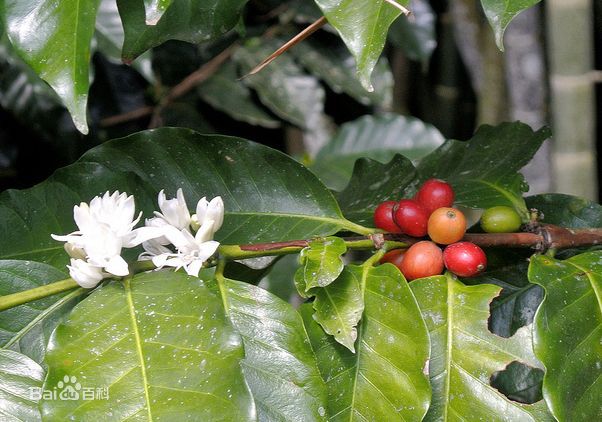The coffee grown in Papua New Guinea is mainly Indonesian Tibica sweet coffee.
Coffee grown in Papua New Guinea is mainly Indonesian Tibica, which is mainly grown in the east and west of Papua New Guinea. The coffee cultivation of Papua New Guinea is quite unique, and a method called "coffee garden" is often used here. Coffee farmers tend to plant coffee trees around their houses at will. The land of Papua New Guinea is very fertile, and the excellent climatic conditions allow it to grow almost anything, and even extensive management can have a fairly good harvest.
In recent years, with the government's attention to the coffee industry, Papua New Guinea has introduced a large number of international well-known coffee varieties, including Blue Mountain Tibica coffee, Arusha Typica in Tanzania and Kent coffee in India. The introduction of these coffee varieties has played a certain role in improving the quality of Papua New Guinea coffee.
Papua New Guinea-Kimel Bean
Producing country: Papua New Guinea
Grade: PB
Planting area: East Highland
Label: Kimel Plantation
Treatment method: wet processing
Appearance: 4ddeband 300grr 18SCR 17-grr
Variety: Tibica
Note:
Dry aromas, aromas of maple, caramel and honey, wet aromas with sweet aromas of fruit wine. The palate has sweet citrus jam and a floral finish.
Dry aroma (1-5): 3.8
Wet aroma (1-5): 3.4
Acidity (brightness) (1-10): 8.7
Taste (layered) (1-10): 8.8
Taste (alcohol thickness) (1-5): 3
Aftertaste (residue) (1-10): 8.7
Balance (1-5): 0
Basic score (50): 50
Total score (maximum 100): 86.4
Strength / main attributes: medium strength / sweet citrus, fruit, flowers
Recommended baking degree: city or city+
Contrast: a very sweet, clear, unique coffee, very different from other Indonesian varieties of coffee

Important Notice :
前街咖啡 FrontStreet Coffee has moved to new addredd:
FrontStreet Coffee Address: 315,Donghua East Road,GuangZhou
Tel:020 38364473
- Prev

What kind of environmental conditions do you need to grow coffee trees? how much is the Alishan mocha coffee?
The origin of the coffee tree is Ethiopia in Africa. In botany, coffee trees belong to the evergreen trees of the subgenus Rubiaceae, and coffee beans, commonly known as coffee beans, are the seeds of the fruit of coffee trees, just because they are shaped like beans, so they are called coffee beans. Climate is the decisive factor for coffee cultivation. Coffee trees are only suitable for growing in the tropics or subtropics, so latitude 25 is south and north.
- Next

How to select coffee beans and how to distinguish defective beans?
Is to learn to check the shelf life of coffee beans, coffee beans begin to oxidize after baking, just like aluminum powder, although the speed is not so fast, but the principle is still the same. And coffee beans have the characteristics of moisture absorption and flavor absorption, so try to buy fresh coffee beans, but for this habit of coffee beans, do not throw away coffee beans that have gone bad, as a dry refrigerator or wardrobe.
Related
- Does Rose Summer choose Blue, Green or Red? Detailed explanation of Rose Summer Coffee plots and Classification in Panamanian Jade Manor
- What is the difference between the origin, producing area, processing plant, cooperative and manor of coffee beans?
- How fine does the espresso powder fit? how to grind the espresso?
- Sca coffee roasting degree color card coffee roasting degree 8 roasting color values what do you mean?
- The practice of lattes: how to make lattes at home
- Introduction to Indonesian Fine Coffee beans-- Java Coffee producing area of Indonesian Arabica Coffee
- How much will the flavor of light and medium roasted rose summer be expressed? What baking level is rose summer suitable for?
- Introduction to the characteristics of washing, sun-drying or wet-planing coffee commonly used in Mantenin, Indonesia
- Price characteristics of Arabica Coffee Bean Starbucks introduction to Manning Coffee Bean Taste producing area Variety Manor
- What is the authentic Yega flavor? What are the flavor characteristics of the really excellent Yejasuffi coffee beans?

